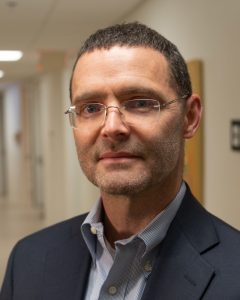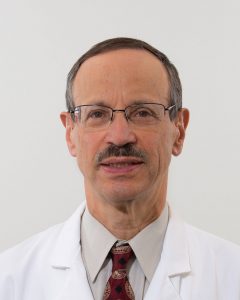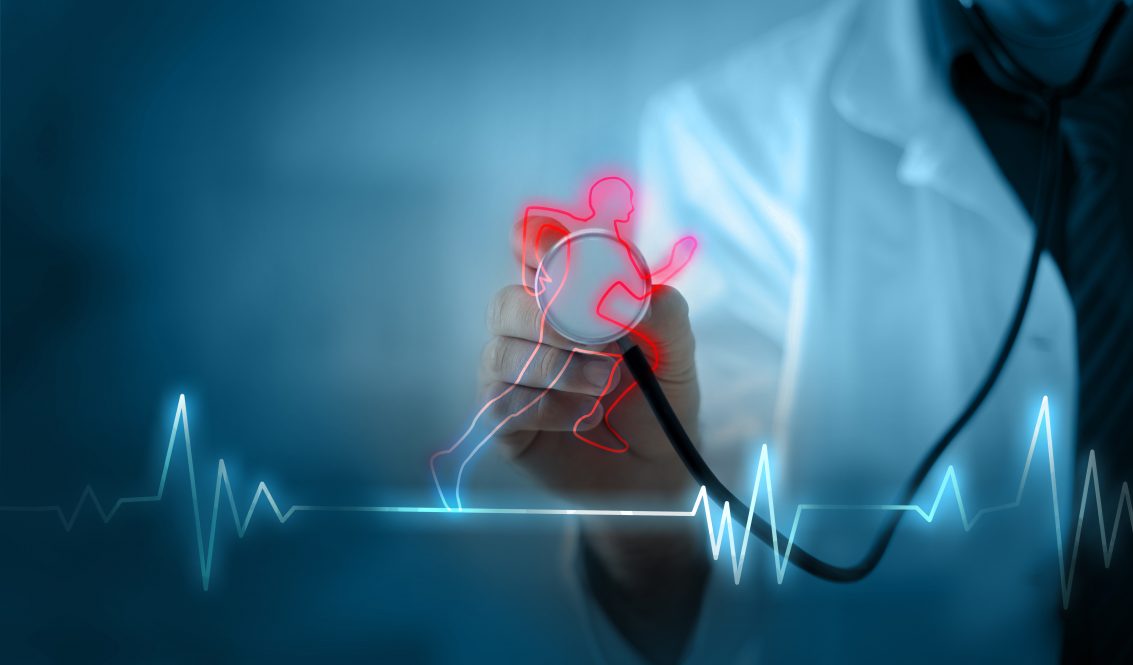When sudden cardiac death is within the range of possible outcomes, it’s understandable that the historic tendency is to err on the side of caution.
That’s what UConn intends to keep doing with its student athletes. Though there’s been some recent movement in the thinking behind restricting athletes with certain types of heart disease or defect from competing, physicians involved in screening UConn athletes say the school is maintaining its current process.
Some institutions have been exploring revised protocols for return to play when athletes are diagnosed with genetic heart conditions that have been associated with the risk of exercise-induced cardiac arrest or sudden cardiac death.

Findings from a study recently published in the Journal of the American College of Cardiology suggest dangers of such athletes returning to play may not be as great as historically believed.
“There are many caveats, including the absolute importance of participating (including practice) in a monitored environment with a well-rehearsed EAP in place and abundant AEDs around,” says Dr. Peter Robinson, a UConn Health cardiologist and one of the physicians who works with UConn athletes. AED stands for automated external defibrillators; EAP stands for emergency action plan. Robinson was not involved in the study.
The study authors acknowledge that the controlled environment in which these athletes were followed — rich in resources, namely medical personnel and AEDs readily available at training and competition sites — may not be accessible to those other than the most elite athletes.

“I would like to stress that at UConn our approach will always be conservative at first to ensure that the athlete’s health and safety is of the highest priority,” says Dr. Deena Casiero, UConn’s senior associate athletic director for sports medicine and head team physician. “We have an amazing group of team physicians and sports cardiologists who are incredibly knowledgeable and really go the extra mile to ensure our athletes are fully evaluated and are an active part of the shared decision-making philosophy that our department is built on.”
As sports cardiologists, Robinson and Dr. Peter Schulman assist with the screening of UConn student athletes when UConn sports medicine staff conclude from general medical screenings that further evaluation by a cardiologist is needed.
“Over the past 20 years we have had patients like those outlined in the study, and have not allowed participation due to our guidelines,” Schulman says.
Speaking in general terms to honor patient privacy, Schulman says there have been occasions over the last 20 years when the protocols disqualified an athlete from participation, citing one example:

“An elite athlete with a potentially lethal cardiac condition arrived at UConn wanting to play the chosen sport that requires intense physical activity,” Schulman says. “The athlete was willing to sign a hold harmless waiver if a cardiac arrest occurred. The guidelines then and now indicate that athletes with that condition should not participate in competitive athletics, except for bowling, golf and a few other lighter sports. The student was so informed and chose to leave the University.”
Robinson notes that cardiac screenings, while helpful, have their limitations, in that they often only tell part of the story.
“There are many ‘false-positive’ results, though these have decreased with recent guideline modifications to electrocardiogram interpretation for the athlete, Robinson says. “Any abnormal result invariably can lead to stress and anxiety that may not be warranted.
“In other settings, these screening protocols can lead to increased cost, which is often difficult to justify. But more importantly, even with standard, or even advanced screening, such as is done with many professional sports, you will never pick up on ‘silent’ issues, such as known or unknown ‘ion channel’ problems that can lead to cardiac arrest. In addition, you just can’t screen for issues such as what happened with Damar Hamlin (commotio cordis), that are a result of a freak accident.”
Hamlin was involved in a collision during an NFL game in January that stopped his heart and required him to be resuscitated on the field. Commotio cordis is a rare medical condition in which impact to the chest timed at an exact millisecond in the heart rhythm can stop the heart. It is unrelated to underlying heart disease. Hamlin is playing again, participating in Buffalo Bills training camp, including preseason games.
“These hidden or unpredictable factors will always exist, therefore, it is most imperative to have a well-rehearsed EAP in place to account for these unknowns and acknowledging the limitations of screening,” Robinson says. “That doesn’t mean there still isn’t a role for screening; there is, but as with anything, you have to understand both its value and its limitations.”
It’s still relatively early in a return-to-play conversation that considers the individual and unpredictable nature of this type of decision, including the acknowledgement of the risk, assessing the athlete’s and the institution’s risk tolerance, and the competing risks of discontinuing the sport.
We are always looking at new research to improve our protocols, but in the end these decisions are incredibly nuanced and individualized, always keeping what’s best for the athlete at the forefront of what we do.
— Dr. Deena Casiero
Such factors include the mental health impacts of having to stop playing and the long-term health and fitness implications when advised not to exercise anymore, Robinson says.
Another potential mitigating factor is data showing the effectiveness and safety of automatic implantable cardioverter defibrillators in athletic endeavors, which can be implanted to monitor and correct abnormal heart rhythm when there has been an indication to do so.
“This study is emblematic of where the sports cardiology landscaping has been heading in the last couple of years: one in which the older dogma of having an absolute cutoff for ‘clearance to play,’ or black-and-white guidelines for participation based on a diagnosis are being rigorously questioned,” Robinson says.
Four U.S. sports cardiology centers were study sites: The Mayo Clinic (Rochester, Minnesota), Massachusetts General Hospital (Boston), Morristown Medical Center (Morristown, New Jersey), and Atrium Health (Charlotte, North Carolina). The protocol included a comprehensive clinical evaluation, availability of AEDs at all competition and practices, and annual re-evaluations.
The study followed 50 collegiate and 26 professional athletes who were cleared to return to play following a genetic heart disease diagnosis. The authors reported zero instances of cardiac arrest or sudden cardiac death.
“If a more lenient approach proves successful in larger numbers of athletes, the national guidelines may change to allow sports participation of certain athletes who were previously barred from competition due to their heart condition,” Schulman says.
“We are always looking at new research to improve our protocols, but in the end these decisions are incredibly nuanced and individualized, always keeping what’s best for the athlete at the forefront of what we do,” Casiero says.



